Indigenous
Trudeau gov’t increases funding for residential school ‘grave’ search despite no bodies being found
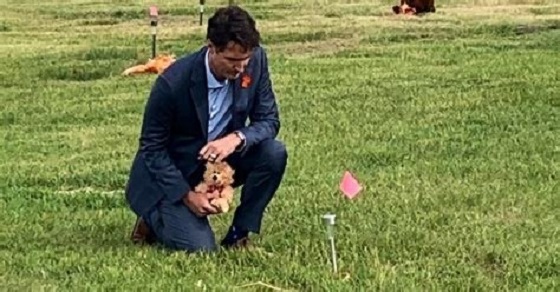
From LifeSiteNews
The $238.8 million budgeted in 2022 for a Residential Schools Missing Children Community Support Fund initially had a $500,000 limit per grant application, a limit that has now been repealed despite no bodies being found.
The federal cabinet of Prime Minster Justin Trudeau is expanding a multi-million-dollar fund which is geared towards documenting thus far unfounded claims that hundreds of young children died at a now-closed residential schools, some of them run by the Catholic Church.
The $238.8 million budgeted in 2022 for a Residential Schools Missing Children Community Support Fund initially had a $500,000 limit per grant application and included an amount up to $300,000 designated for “field work.”
The funding limits have now been repealed, however, as per Blacklock’s Reporter, with no details having been given by the department on what the new costs will be.
As noted by Crown-Indigenous Relations Minister Gary Anandasangaree in a recent statement, “We know this funding and these supports will never be enough to fully repair the intergenerational trauma.”
According to the department, its “intention was to fund as many initiatives as possible, but we recognize the lack of flexibility in these changes was a mistake.”
The initial funds budgeted in 2022 to aid in “locating burial sites linked to former Residential Schools” is set to expire in 2025, with some $216.5 million having been spent.
A total of $7.9 million granted for fieldwork has resulted in no human remains having been found to date.
In 2021 and 2022, the mainstream media ran with inflammatory and dubious claims that hundreds of children were buried and disregarded by Catholic priests and nuns who ran some of the schools.
The Tk’emlups te Secwepemc First Nation was more or less the reason there was a large international outcry in 2021 when it claimed it had found 215 “unmarked graves” of kids at the Kamloops Residential School. The claims of remains, however, were not backed by physical evidence but were rather disturbances in the soil picked up by ground-penetrating radar.
The First Nation now has changed its claim of 215 graves to 200 “potential burials.”
As reported by LifeSiteNews, Prime Minster Justin Trudeau as recently as June again falsely stated that “unmarked graves” were discovered at former residential schools.
Canada’s Department of Crown-Indigenous Relations has confirmed it has spent millions searching for “unmarked graves” at a now-closed residential schools.
Canadian indigenous residential schools, while run by both the Catholic Church and other Christian churches, were mandated and set up by the federal government and ran from the late 19th century until the last school closed in 1996.
While there were indeed some Catholics who committed serious abuses against native children, the unproved “mass graves” narrative has led to widespread anti-Catholic sentiment since 2021.
While some children did die at the once-mandatory boarding schools, evidence has revealed that many of the children tragically passed away because of unsanitary conditions due to the federal government, not the Catholic Church, failing to properly fund the system.
Aristotle Foundation
The extreme ideology behind B.C.’s radical reconciliation agenda
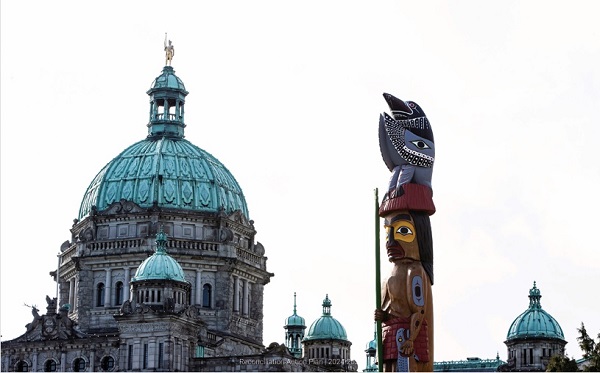
BC government advisors believe ‘settlers’ must atone for Canada’s ‘original sin’
British Columbians are understandably perplexed as to why their provincial government is going headlong down an economically devastating, undemocratic and divisive “reconciliation” path that is so obviously counter to the public interest.
But the reason is simple, and it’s in plain view for anyone who cares to look. Premier David Eby has surrounded himself with advisors who fervently believe in a radical ideology that sees the drastic reshaping of our society as a moral imperative.
One advisor has even suggested that Canada’s formation is analogous to an “original sin,” and his recipe for redemption demands — in his own words — turbulence, rupture, sacrifice, pain, and the utter transformation of human affairs.
Understanding this alarming worldview is necessary for anyone concerned with where things are headed on the reconciliation front.
In early November, Eby came as close as he’s ever been to revealing the “original sin” mentality behind his agenda, stating in a video that changes resulting from B.C.’s Declaration on the Rights of Indigenous Peoples Act (DRIPA) are “about correcting that original colonial mistake.”
This isn’t just a passing remark. It’s a tip of his hand exposing a disconcerting philosophy long held and frequently expressed by his hand-selected reconciliation advisors.
Doug White and Dr. Roshan Danesh both played key roles in expanding B.C.’s Indigenous policies.
White serves Eby directly as special counsel to the premier on reconciliation, providing guidance on Indigenous policy and the implementation of DRIPA, which is the B.C. government’s enabling legislation that gets its framework from the United Nations Declaration on the Rights of Indigenous Peoples (UNDRIP).
Danesh served the government as a facilitator on reconciliation and wrote the report upon which the province’s interim approach to implementing DRIPA’s section 3 was based (this is a crucial section that requires the province to take “all measures necessary” to ensure consistency between the laws of B.C. and UNDRIP).
In addition, both White and Danesh have been officially acknowledged for playing an “absolutely fundamental role” in the Haida agreement. That agreement set a concerning policy precedent by recognizing Aboriginal title over private property in B.C. for the first time, a precursor to the B.C. Supreme Court’s seriously problematic Cowichan decision, which has created considerable uncertainty for property owners across the province.
Given the critical role played by White and Danesh in some of the province’s most consequential reconciliation initiatives, it’s important to understand their views on what reconciliation truly requires.
In a 2023 joint article titled “Rising to the Challenge of Reconciliation,” Danesh and White write of their desire to achieve “turbulent transition,” and of how “this moment in history is one of rupture.”
“We cannot build the new,” they write, “on infirm foundations.” Achieving true reconciliation “will require human affairs to be utterly reorganized. We must all be persistent and audacious in our efforts to advance and achieve this outcome.”
The changes involved in the “work of true reconciliation” are described in the article as analogous to “the struggle of a human being coming of age. At such a time, widely accepted practices and conventions, cherished attitudes and habits, are one by one being rendered obsolete.”
When asked about the article’s revolutionary language during legislative debates in 2024, then-minister of Indigenous relations Murray Rankin responded that the language in the article did “not strike (him) as extreme at all.” He went on to say reconciliation “is not for sissies.”
Danesh had previously expressed such views in a 2021 video on reconciliation saying, “this appeal to harmony in conditions of injustice is really just the veiling over of systems of oppression all over again. The hard work, the real work of building unity is not hanging out and getting along with each other and being understanding. It involves sacrifice. It involves structural, systemic, individual, collective societal change.” In the same video, he calls for “painful” change that ought to “reshap(e) the patterns of relations.”
In a paper for the Union of B.C. Indian Chiefs in 2019, White explicitly summons the notion of “original sin.” He explains that “transformative” federal and provincial programs “hold the potential to place the future on a different course — one which significantly diverges from the original sin of Canada.”
Danesh similarly speaks of “original sin,” and its consequences for Crown title and private property rights. In a 2020 paper for B.C.’s First Nations Energy and Mining Council, he writes, “the history of colonialism has created what might be called the ‘domino effect’ among property rights in Canada. The original sin of ignoring Indigenous title, and as such denying Aboriginal title, knocks down much of what has been presumed to be aspects of Crown title in Canadian history, which then knocks down much of the foundation for certainty of fee simple property title,” — the standard form of private land ownership in Canada.
Radical perspectives on land ownership are not confined to Eby’s advisors. They are held by key elected members of his government as well.
In 2023, then-minister for mining Josie Osborne commented, “our approach to natural-resource development must be done in collaboration and partnership with the rightful owners of the land.”
Current Indigenous relations minister Spencer Chandra Herbert, in reference to 1.2 million acres of public land on the Sunshine Coast, has said, “if it’s (shíshálh Nation’s) land, they get to make decisions on it.”
And Eby’s previous Indigenous relations minister, Christine Boyle, is a staunch believer in the “LandBack” movement, an initiative that has been critical of Canada and the provinces’ “stubborn insistence… that they own the land” and that holds that change must involve “Canada ceding real jurisdiction to Indigenous peoples.”
Another B.C. NDP MLA, Rohini Arora, suggested in the legislature that non-Indigenous British Columbians are “settlers,” “colonizers,” and “uninvited guests,” to the applause of her colleagues.
Eby and his reconciliation advisors are fiercely committed to an atonement project of massive proportions for an “original sin” they believe mars the very conception of this country. Expiation will require turbulent and painful change that renders obsolete our “cherished habits.” And they will undertake “persistent and audacious” efforts aimed at a drastic reorganization of human affairs to achieve it.
Only when we understand the ideology underlying the B.C. government’s radical reconciliation agenda can we comprehend where things are going. And right now, we’re being zealously led towards an ungovernable province in pursuit of absolution.
Caroline Elliott is a senior fellow with the Aristotle Foundation for Public Policy. Photo: Legislative Assembly of British Columbia Reconciliation Action Plan 2024-2028.
Energy
The Trickster Politics of the Tanker Ban are Hiding a Much Bigger Reckoning for B.C.

From Energy Now
By Stewart Muir
For years, a conservation NGO supported by major foreign foundations has taken on the guise of Indigenous governance authority on British Columbia’s north coast. Meanwhile, rights-holding First Nations with an economic agenda are reshaping the region, yet their equal weight is overlooked. A clash of values has resulted.
For more than a decade, British Columbians have been told — mostly by well-meaning journalists and various pressure groups — that an organization called Coastal First Nations speaks with authority for the entire coast. The name sounds official. It sounds governmental. It sounds like a coalition of Indigenous governments with jurisdiction over marine waters.
It isn’t any of those things.
Coastal First Nations (CFN) is a non-governmental organization, incorporated under the BC Societies Act as The Great Bear Initiative Society. It doesn’t hold Indigenous rights or title. It has no legislated role to provide benefits or services to First Nations members. It has no jurisdiction over shipping, marine safety, forestry, fisheries, energy development, or environmental regulation. Yet its statements are frequently treated as if they carry the weight of sovereign authority.
It’s time to say out loud what many leaders — municipal, Indigenous, and industry — already know: CFN is an advocacy group, not a government. Case in point, a recent news story with the following lede: “B.C.’s Coastal First Nations say they will use ‘every tool in their toolbox’ to keep oil tankers out of the northern coastal waters.” A spokesperson claimed to represent “the Rights and Title Holders of the Central and North Coast and Haida Gwaii,” yet notwithstanding the rights of any individual First Nation, CFN does not hold any formal authority.
Here’s why this matters. The truth is, Alberta has already struck its grand bargain with the rest of Canada. Now it’s time to confront the uncomfortable truth that the country is still one bargain short of a functioning national deal.
In 2026, with Canadians increasingly alert to who is shaping national conversations, there is a reasonable expectation that debates affecting our economic future should be led and conducted by Canadians — not by foreign foundations, not by out-of-country campaign strategists, and not by NGOs built to advance someone else’s policy objectives.
Where the confusion came from
CFN’s rise in public visibility traces back to the “Great Bear Rainforest” era, when U.S. philanthropic foundations poured large sums of money into environmental campaigns in British Columbia. A Senate of Canada committee document notes that the Gordon & Betty Moore Foundation alone provided approximately $25 million directly to Coastal First Nations, delivered as twenty-five nearly $1 million installments.
CFN also played a central role in the Great Bear Rainforest negotiations, which were financed by a coalition of foreign philanthropies including the Packard Foundation, Hewlett Foundation, Wilburforce Foundation, Rockefeller Brothers Fund, Nature Conservancy/Nature United, and Tides Canada Foundation. These foundations collectively contributed tens of millions of dollars to the “conservation financing” model that anchored CFN’s operating environment.
This history isn’t speculative. It’s well documented in foundation reports, Canadian Parliamentary evidence, and the publicly disclosed financial architecture behind the Great Bear Rainforest. For a generation, well-funded U.S. environmental campaigns have worked to make Canadians afraid of their own shadow by seeding doubt, stoking paralysis, and teaching a resource nation to second-guess the very wealth that built it.
Between 2010 and 2018, an independent forensic accounting review by Deloitte Forensic (backed by the Alberta government) found that foreign foundations provided roughly $788.1 million in grants for Canadian environmental initiatives. The largest single category — by a wide margin — was marine-based initiatives, totalling $297.2 million. In Deloitte’s categorization, “marine-based” overwhelmingly refers to coastal campaigns: Great Bear Rainforest–related advocacy, anti-tanker/shipping activism, marine-use regulation campaigns, marine ecological programs, and other coastal political work.

Land-based initiatives were the second-largest category ($191 million), followed by wildlife preservation ($173 million).
The forensic review also showed that of the $427.2 million that physically entered Canada, 82% — approximately $350.3 million — was spent in British Columbia, with the dominant share directed specifically toward coastal and marine initiatives.
Taken together, these findings confirm that foreign-funded environmental activity in Canada has been geographically concentrated in British Columbia and thematically concentrated on the coast – exactly the domain where CFN has been positioned as a public-facing authority.
The real authority lies with the nations themselves
If British Columbians want to understand who truly governs the coast, they should look to the Indigenous governments that hold rights, title, citizens, and accountability — not NGOs that comment from the sidelines. That means not overlooking:
- Haisla Nation, leaders of Cedar LNG
- Nisga’a Nation, co-developers of Ksi Lisims LNG
- Gitxaala Nation, asserting legal and territorial authority
- Kitselas and Kitsumkalum, both shaping regional development
These governments are also coastal First Nations. They negotiate major economic partnerships, steward lands and waters, and make decisions grounded in their own legal orders. Moreover, representation is the key measure of accountability in a democracy: First Nations governing councils are elected by their members. The CFN is not elected. The nations are accountable to their own people — not to U.S. philanthropies or to the strategic objectives of foreign-backed environmental campaigns.
The Haisla Nation once belonged to CFN, but quit in protest in 2012 when the body opposed LNG. The Haisla council went on to fully embrace economic development via liquefied natural gas and own the upcoming Cedar LNG project.
Meanwhile, the central and northern coastal regions where CFN has opposed numerous economic opportunities continue to suffer the worst child poverty in British Columbia.
In the delicate politics of the region’s First Nations alliances, relationships are constantly in motion and governed by inviolable traditions of mutual respect. From these threads, it has to be said that the CFN’s strategy of weaving the appearance of unanimity is truly a fabrication. In point of fact, CFN represents just one half of the story. My data source tells the story, by drawing together the latest available economic and demographic information for 216 British Columbia First Nations:
- Status Indian residents of CFN communities on the north coast number 5,484, with a total membership near and far of 20,447.
- The pro-development group noted earlier numbers 5,505 living local out of a total membership of 16,830.
In other words, virtually equal. Hence it’s obvious that any media report citing CFN as the singular authority for local First Nations interests is a misleading one. CFN speaks for only a slice of the North Coast, not the whole, and the numbers make that impossible to ignore.
When a CFN motion opposing responsible resource development was adopted by the Assembly of First Nations (see Dec. 2 news), it was further evidence that the deck is stacked against First Nations that are accountable and position themselves as having broad responsibilities, including but not limited to raising the standard of living of their members.
The future belongs to the nations
The politics of LNG on the North Coast can’t be grasped without staring directly at the tanker ban — not as scripture, but as the political curiosity it has become. Anyone who knows these waters understands it’s mostly theatre: it doesn’t question letting Alaska oil tanker ships transit our exclusive economic zone when we cannot, and it doesn’t touch the real risks coastal people actually worry about. Yet waving it away is naïve. The ban behaves like a trickster spirit in our public life — capricious, emotionally loaded, and capable of turning a routine policy debate into a cultural conflagration with barely a flick of its tail.
This is why Coastal First Nations retain such gravitational pull. For years, the ban has served as the moral architecture of their Great Bear Sea campaign. CFN represents a long-game strategy — build legitimacy, occupy the moral high ground, and shape the destiny of a nation by holding the symbolic centre. Their concerns seem genuine and rooted in lived stewardship – yet were shaped by Madison Avenue minds hired by American philanthropists to affect our politics. But a near equal number of coastal nation residents unified by a different outlook also have skin in the game. They are charting futures grounded in prosperity, environmental care, and sovereignty on their own terms, and their authority is the real thing — born of title, law, and accountability to their own people.
And here is the irony worth heeding: the tanker ban’s pageantry masks a solution. It is dragging into daylight a conversation the province has avoided for decades — a conversation that will soon prove inevitable as court rulings unsettle the very foundation of property rights in British Columbia. This is the hinge that the moment turns on.
Canada cannot resolve its growing national contradictions without moving its energy to global markets. Alberta has already made its grand bargain with the country. Now British Columbia must craft its own — harnessing the prosperity of energy development to discharge political debts and finally settle the title question that has defined the province’s modern era.
Stewart Muir
-

 Business2 days ago
Business2 days agoWhy Does Canada “Lead” the World in Funding Racist Indoctrination?
-

 Business1 day ago
Business1 day agoLoblaws Owes Canadians Up to $500 Million in “Secret” Bread Cash
-
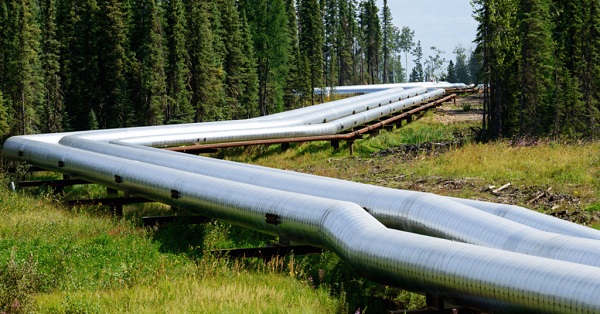
 Dan McTeague1 day ago
Dan McTeague1 day agoWill this deal actually build a pipeline in Canada?
-

 Media2 days ago
Media2 days agoThey know they are lying, we know they are lying and they know we know but the lies continue
-

 Censorship Industrial Complex1 day ago
Censorship Industrial Complex1 day agoUS Condemns EU Censorship Pressure, Defends X
-

 Economy8 hours ago
Economy8 hours agoAffordable housing out of reach everywhere in Canada
-
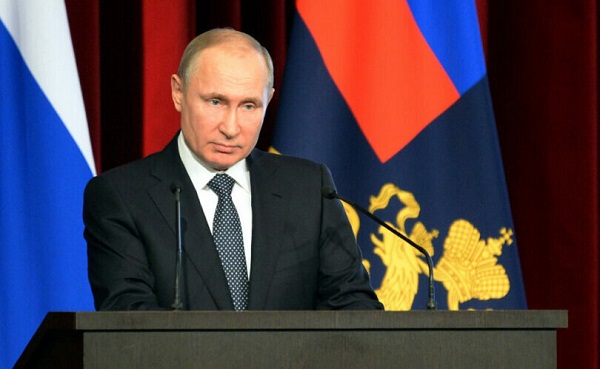
 Focal Points2 days ago
Focal Points2 days agoThe West Needs Bogeymen (Especially Russia)
-
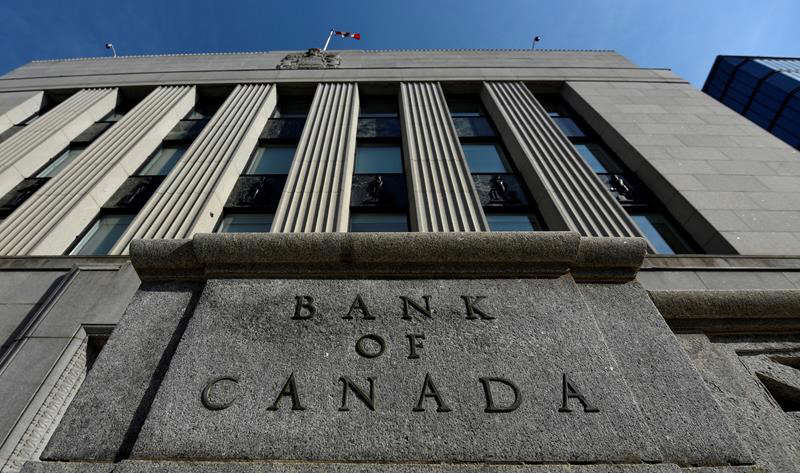
 Banks1 day ago
Banks1 day agoTo increase competition in Canadian banking, mandate and mindset of bank regulators must change





